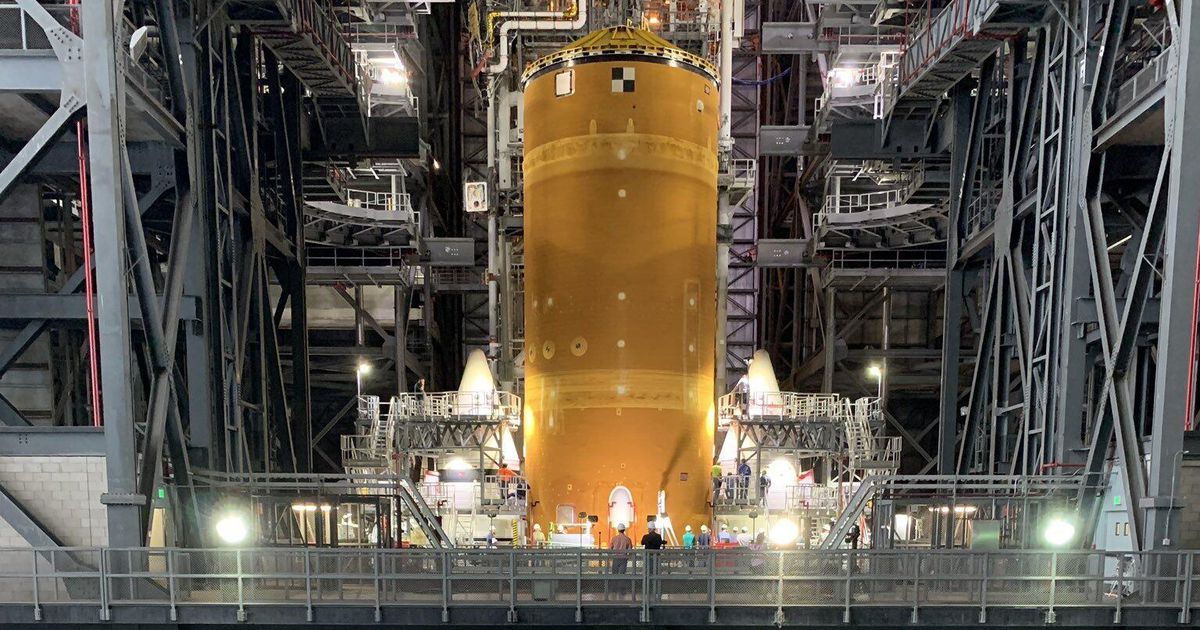
See NASA's bonkers-big moon SLS rocket standing up, boosters and all
The core stage of the SLS moon rocket sits between the twin boosters. The business end is pointed down. The Orion spacecraft will go on top.NASAWell that's a big rocket. The Space Launch System is the most powerful rocket NASA has ever built, and it's meant to launch spacecraft and astronauts to the moon as part of the Artemis program. We have our first look at the whole shebang now that the huge core stage has been lifted into place with its two hefty boosters at NASA's Kennedy Space Center in Florida. While NASA is still aiming to take humans back to the moon, this particular SLS is meant for Artemis I, an uncrewed mission around the moon that could launch later this year."Teams are continuing work to secure the core stage to the solid rocket boosters for Artremis I," NASA's Exploration Ground Systems program tweeted on Saturday, along with a photo of SLS with people standing on a platform for scale.The stacking operations for the launcher are happening inside the Vehicle Assembly Building, one of the largest buildings in the world. The core stage (the big center part of SLS) stands 212 feet (65 meters) tall and weighs 188,000 pounds (85,275 kilograms). Just lifting it up and into place on top of the mobile launcher platform is an epic endeavor. On Friday, NASA tweeted a timelapse video of the process for lifting the core stage into a vertical position.The core stage and boosters are now on the mobile launcher platform, a large support structure that can be moved (slowly) out to the launch pad when it's ready for takeoff. We had previously watched the core stage roar to life in a major test of the rocket's four engines in March. After a successful test, NASA shipped "the backbone of the SLS rocket" from Mississippi to Florida to join its two boosters. Artemis I is meant to prove the design and safety of SLS and the Orion spacecraft before NASA sends humans into space with the hardware. It's a critical step before Artemis II, which would send humans around the moon in 2022. Artemis III would aim to land astronauts on the surface of the moon as early as 2024.Of course, space timelines tend to slip. If we're lucky, we'll see SLS blast off this year. It should be a stunning launch.Follow CNET's 2021 Space Calendar to stay up to date with all the latest space news this year. You can even add it to your own Google Calendar.
……Space
Comments
Leave a comment in Nestia App